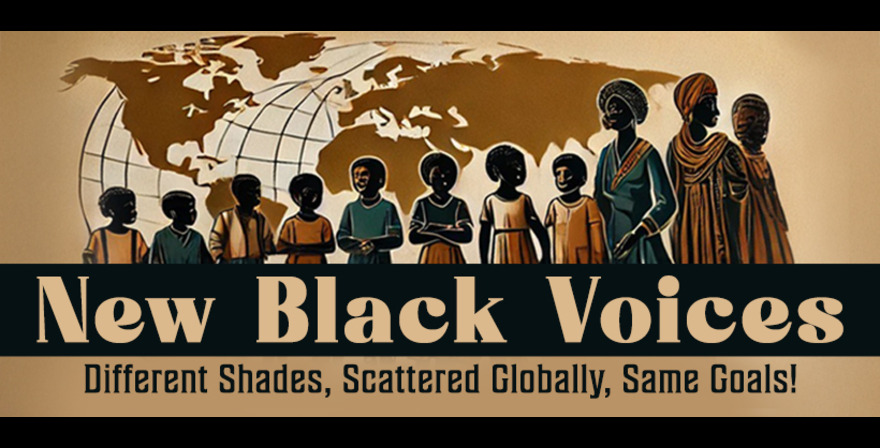By Oprah Cunningham, The Leadership Conference on Civil and Human Rights | Photo credits: Ungvar /Shutterstock.com
With the rise of anti-immigrant rhetoric and the possible introduction of strict immigration policies outlined in Project 2025, understanding the harms of the current immigration system and the need for collective action is crucial.
In this discussion, Katherine Hawkins, senior legal analyst at the Project on Government Oversight (POGO), examines the complexities of U.S. immigration enforcement. With her expertise in human rights, national security, and immigration, Hawkins highlights the significant challenges faced by immigrants in the United States, the impact of political rhetoric, and the need for fair immigration reform.
This interview has been edited for length and clarity.
What, in your view, is the current landscape of immigration enforcement in the United States?
The current landscape is unfortunately quite troubling. Immigrants have been targeted, and both documented and undocumented immigrants face backlash from people in the United States. This was evident when the Border Patrol and Customs and Border Protection (CBP) were used against protesters during the George Floyd racial justice protests in summer 2020. CBP conducted surveillance on Floyd’s funeral, and Border Patrol agents were involved in detaining people off the streets in Portland.
President Biden campaigned on restoring protections for asylum seekers, but his administration has largely continued Trump-era policies. Throughout this, there has been a push to falsely claim that the border is open, fueling conspiracy theories like the Great Replacement Theory, this idea that politicians are inviting immigrants to replace “real” Americans — white, Christian, native-born, and English-speaking Americans — which has motivated violence and is increasingly echoed by some members of Congress.
From what you see in your work, what are some of the key problems when it comes to border enforcement? And how do these problems affect people of color?
Our last major immigration reform was in 1986. Since then, particularly since September 11, Congress has poured a lot of resources into financing border patrol agents, financing border walls and militarization, and increasing surveillance. Fewer resources have gone to creating ways for people to come here legally.
Currently, there are about 20,000 border patrol agents, while the number of immigration judges and asylum officers remains in the hundreds — leading to a court backlog of decades. Asylum is the only option for many, but those fleeing life-threatening situations often struggle to get visas, with people of color facing additional challenges. Unfortunately, Black migrants are more likely to encounter extortion and kidnapping en route and face higher detention rates in the United States. The immigration system’s arbitrariness disproportionately affects those with darker skin.
Another recent development in the immigration debate has been states having their own immigration policies that criminalize people who came to the United States without authorization, even though it’s supposed to be a federal issue. The racial profiling that takes place can target U.S. citizens as well as migrants.
What are some of the key problems when it comes to immigration detention?
Immigration and Customs Enforcement (ICE) currently detains about 35,000 people awaiting their court dates. Additionally, many are processed through CBP detention, which is supposed to be limited to 72 hours but often lasts longer. Instead of regular immigration court, many are subject to expedited removal, which — despite the name — can result in weeks of detention in poor conditions without access to the outside world.
The Texas government has created its own system to deter migration. One initiative, Operation Lone Star, involves the Texas National Guard and law enforcement arresting migrants under state law and charging them with criminal trespass on private property in a special court system for migrants. Afterward, they return to ICE custody or the immigration court system.
Texas has also implemented physical barriers, such as concertina wire along the border, to prevent migrants from reaching the U.S. side and being turned over to Border Patrol. More recently, Texas passed S.B. 4, a law attempting to make it a state crime to enter the United States from another country and giving Texas the power to deport people. The Justice Department sued, putting S.B. 4 on hold. Other states, including Iowa and possibly Oklahoma, have begun passing similar laws.
The growth in surveillance is particularly alarming. For instance, the FBI has been collecting DNA from many people in immigration custody, vastly increasing the DNA stored in its databases. The parallels with the criminal justice system are clear: There’s a willingness to spend on detention but not on other necessary reforms. Redesigning the immigration system to be fair and efficient requires congressional action, as Congress controls the funding. However, the executive branch can still do a lot independently.
What would equitable immigration reform with respect to enforcement and detention look like?
I think we should spend less on detention, militarization, and surveillance and allocate more resources to fairly decide cases and provide legal entry opportunities.
We need realistic means for people to come legally. Deterrence and enforcement have been the main approaches for decades, but providing legal migration pathways and speeding up case adjudication makes more sense.
Simplifying our protection laws could actually help a lot, too. Currently, to get asylum, you must prove your life is in danger for the exact right reasons. We should focus less on the reasons and simplify the law for quicker, fairer hearings.
Having people able to support themselves while their case is pending would also help a lot, and coordinating where people go and helping people have work authorization and go to places that are really in need of workers would also make a lot of sense.
Since we are deep in an election season, how are political motives playing into the increase in anti-immigrant rhetoric and the debates over legislation?
Both parties are competing to appear tougher on the border, ignoring chronic issues with Border Patrol accountability. Despite some senior Border Patrol officers being under internal investigation, the Senate has voted twice on a bill to increase enforcement resources. While there was some effort to increase asylum officers and immigration judges, the focus remained on enforcement, with little attention to changing the system or holding agencies accountable.
Rhetoric about getting tough on the border has overshadowed the radical nature of what’s actually being proposed, such as creating mass detention camps and using the military for deportations. Historically, mass deportations have mistakenly included U.S. citizens. With the immigration and asylum systems under-resourced, there could be attempts to bypass them, leading to mass roundups and deportations.
If Project 2025 is implemented, it could cause significant damage to communities, the economy, and countless individuals. Unfortunately, we see proposals to increase funding for agencies that could carry out these plans, with few safeguards against it.
When it comes to anti-immigrant rhetoric, it’s crucial to seek out good sources of information. Remember, immigrants are just people. Speaking from personal experience, many people in child care, elder care, construction, and other essential jobs are immigrants. They are just people and families who want the same things as everyone else. If you think about the immigrants in your community, you’ll realize they play a significant role.

